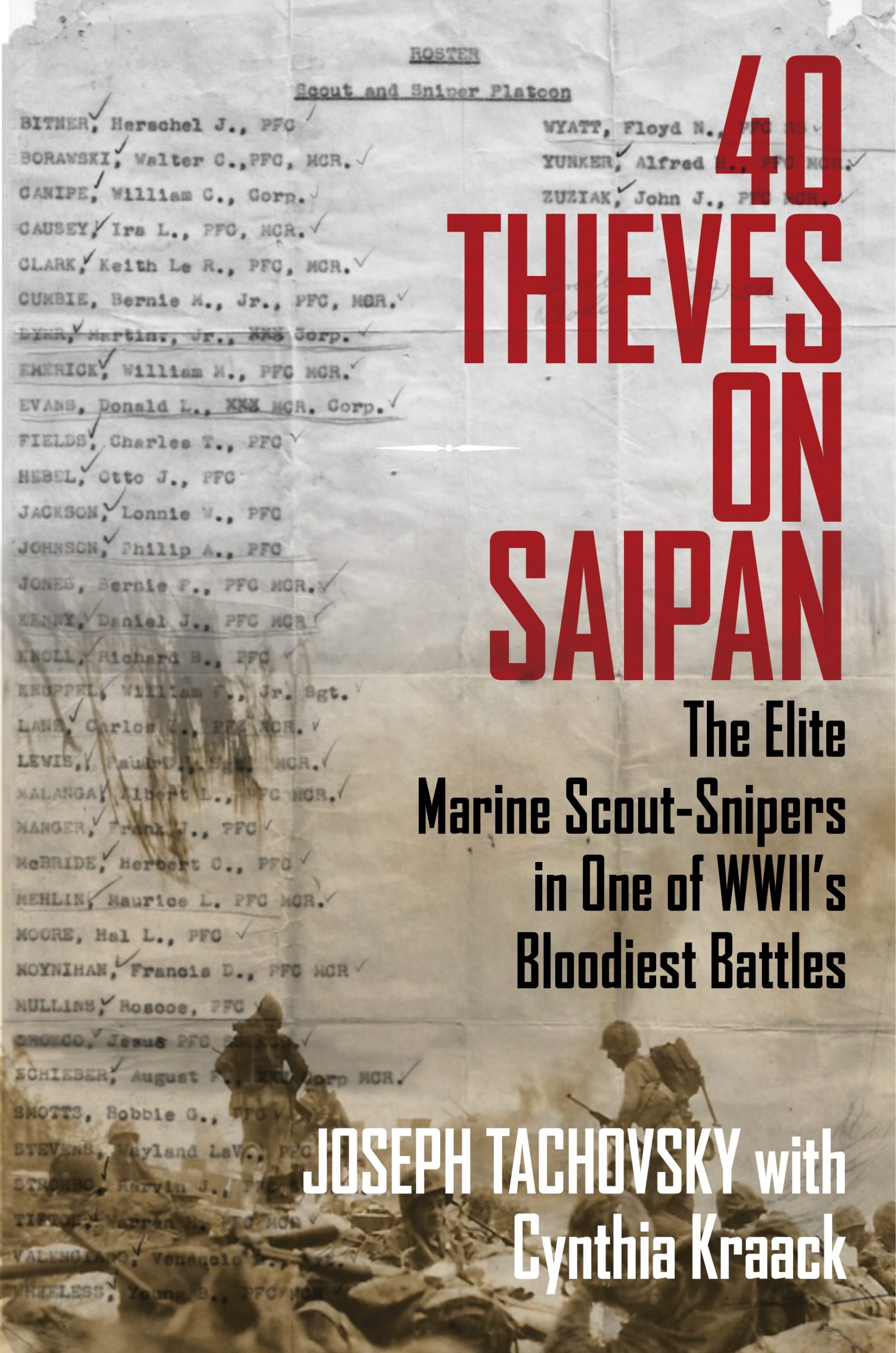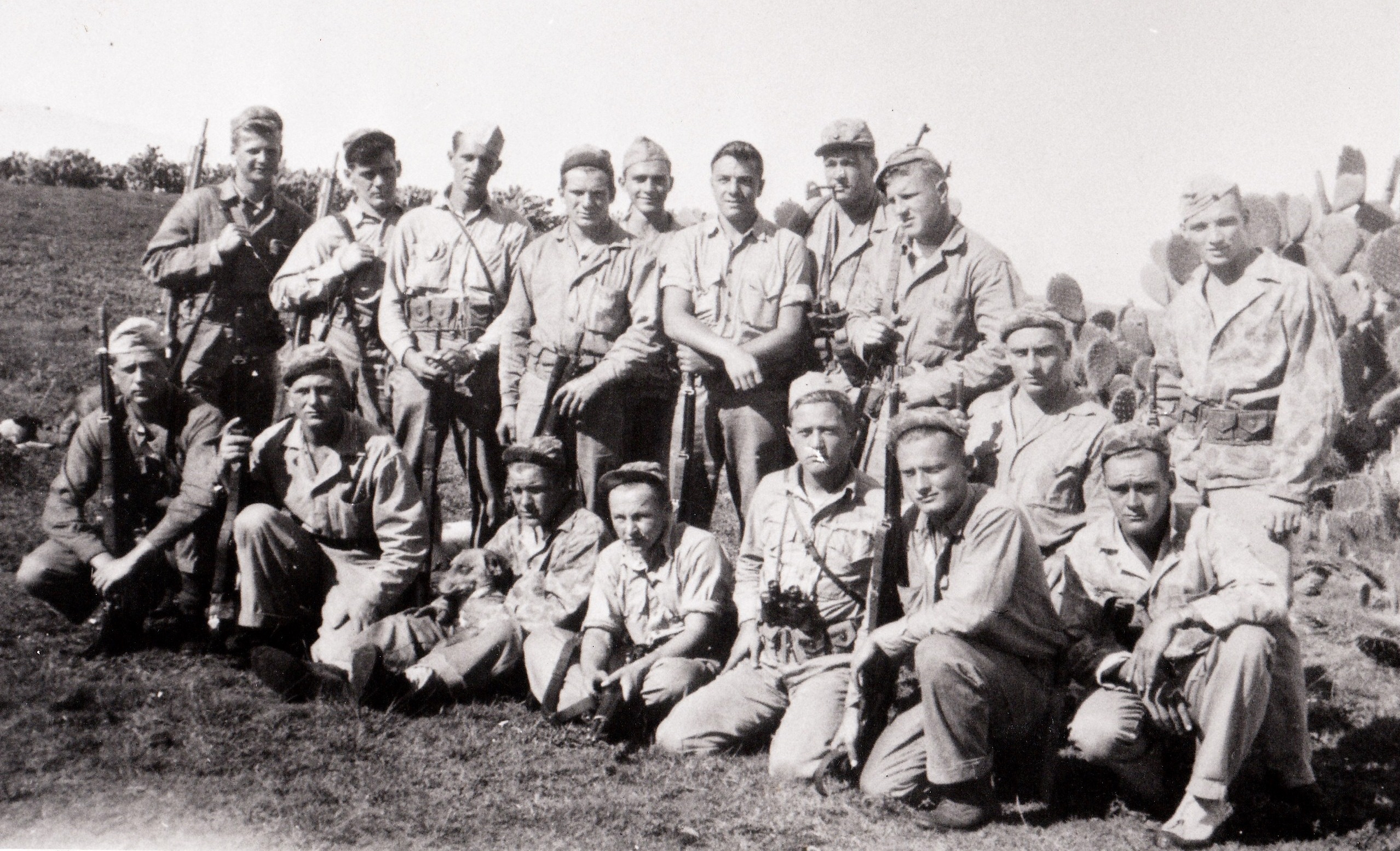Over 245 years, the U.S. Marine Corps has handled every job the nation has given it, fighting for freedom from the Revolutionary War to the lingering war on terror.

They have been so effective that the author of a new book about 40 elite Marine scout snipers that led in the 1944 Battle of Saipan thinks they could be a model for helping to unify the country, deeply divided after the contentious election.
In his history of his father’s heroic platoon, Joseph Tachovsky wrote of an unusual group of men unconnected, except for their uniform, that came up with their own motto for survival.
That message, he said in an interview, was, “You have to work together because it makes everybody better. That was the platoon’s little motto: Working together, we make each other better.”
In 40 Thieves on Saipan: The Elite Marine Scout-Snipers in One of WWII’s Bloodiest Battles, he told of how his father, Lt. Frank Tachovsky, pulled together a group of kids, including a Jew, a Native American, a Hispanic, and others in a band of “rascals” to break Japan’s control of the island.
Somewhat like today, the author said the times then were tumultuous, the nation divided on race and religion. But in joining the Marine Corps, the 40 found unity and family in a way that could be a “semper fi” example for the country.
“My wish would be that the divisiveness would stop. The old adage of ‘united we stand; divided we fall’ is true today as it was in any other time in history. Especially today, when you wish that the Democrats and Republicans could forget this animosity and start to cooperate,” said Tachovsky.
Commandant’s Birthday Message
As the 245th Marine Corps birthday draws near, @cmc_marinecorps reminds us how the Corps’ legacy lives on in every Marine. #HappyBirthdayMarines pic.twitter.com/3FuqzHE6qe
— U.S. Marines (@USMC) November 5, 2020
In researching the military exploits of his father, which the elder Tachovsky rarely discussed while alive, his son saw the purpose and mission of the Marines that stretch from their creation in 1775 to the Corps’s birthday this month.
He interviewed many survivors of the platoon and said that they all felt camaraderie with all in the Corps, even those fighting today. “All of the guys would say, and they’d follow the Corps, and they’d say it’s no different for any of those kids today than it was for us on Saipan. When you’re facing an enemy that is trying to annihilate you, you’ve got the same feeling it doesn’t matter,” he said.
Tachovsky’s history, published by Regnery History, also touched on why America loves the Marine Corps.

“Well, they’re rascals,” he said. “They’re sort of the bad boys.”
For example, all of his father’s platoon got their ears pierced and wore a hoop earring. Back then, he said, swashbuckling actor Errol Flynn wore one in movies, so it was “a manly thing.”
And the “40 Thieves” nickname itself pointed to their exploits of finding, and taking, whatever supplies they needed.
In his story, done first as an oral history before turning it into a book co-written with Cynthia Kraack, he also discovered from those who were under his father just how devoted the Marines were to each other and their mission.
Tachovsky wrote of one injured Marine who was told that his fighting days were over. He responded, “‘Hell, I just got here.’ That is something you hear very often in the Corps. They wouldn’t leave the battlefield. They had to fight to the death,” said the author.

